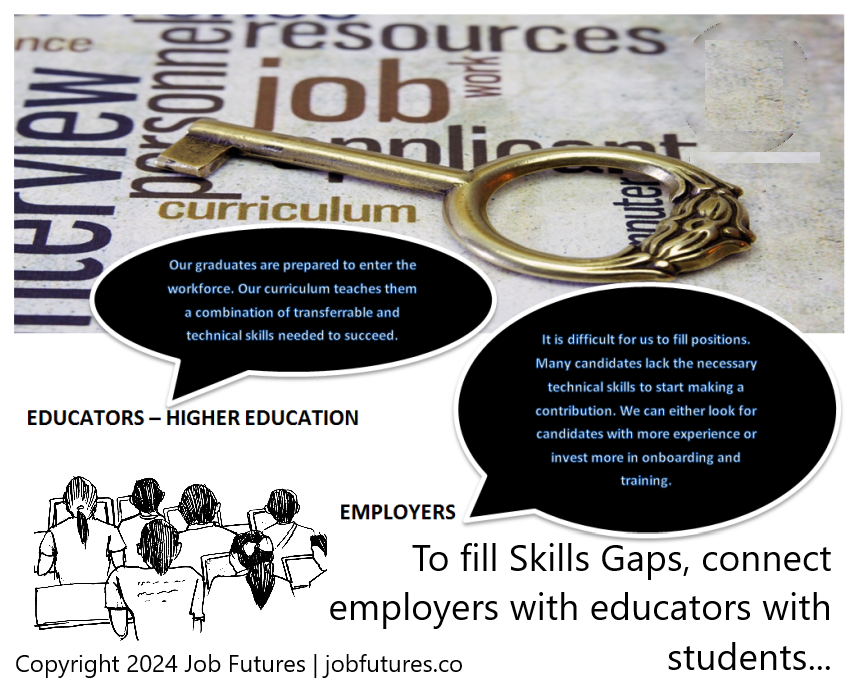Skills Gap
The notion of a skills gap often gets played different ways. Like with climate change, it ruffles the feathers of establishment and there are deniers. Who is responsible? How are leaders going to address the persistent problem?
With employment, a quick retort is always the steadiness of a relatively low unemployment rate for the last two decades. Seemingly, employers make do by either: hiring and reskilling or upskilling or simply scaling back. But with AI and automation, an employer recognizing a skills gap might look to automation to fill it. Once a job is automated, does a company ever go back?
With post secondary education, it challenges the adequacy and effectiveness of colleges, universities, and training organizations. Does the traditional time based credit hour system work? Would a skills taxonomy matching learning with jobs skills be more practical? Should higher education prioritize job placement?
According to the World Economic Forum 2023 Future of Jobs Report, the skills gap persists. Some of the findings in their annual survey of company managers:
60 percent of respondents reported difficulty “bridging skills gaps locally” and 53 percent “attracting talent” as barrier to their business.
Predict the shelf life of 44 percent of workers skills is less than 5 years.
(Managers with) +50,000 employees AI and machine learning is their top training priority and for all respondents it was third.
Actual evidence of a Skills Gap is occurring as our country invests in the manufacturing of semiconductors (in response to the Chips Act). There is a lack of adequate engineers.
In Arizona, TSMC is scaling back and extending their operation date because of “insufficient amount of skilled workers with… an expertise” (Arizona Labor Spat Signals Challenges for U.S. Chip Manufacturing).
In Syracuse, anticipating a skills gap, Syracuse University’s Engineering School will “increase enrollment by at least 50%, 50 new faculty, and increase research by 100%” to prepare for a Micron investment of $100 billion in a memory chip plant (ECS, Micron established ‘academic partnership’ months ahead of Clay plant construction).
